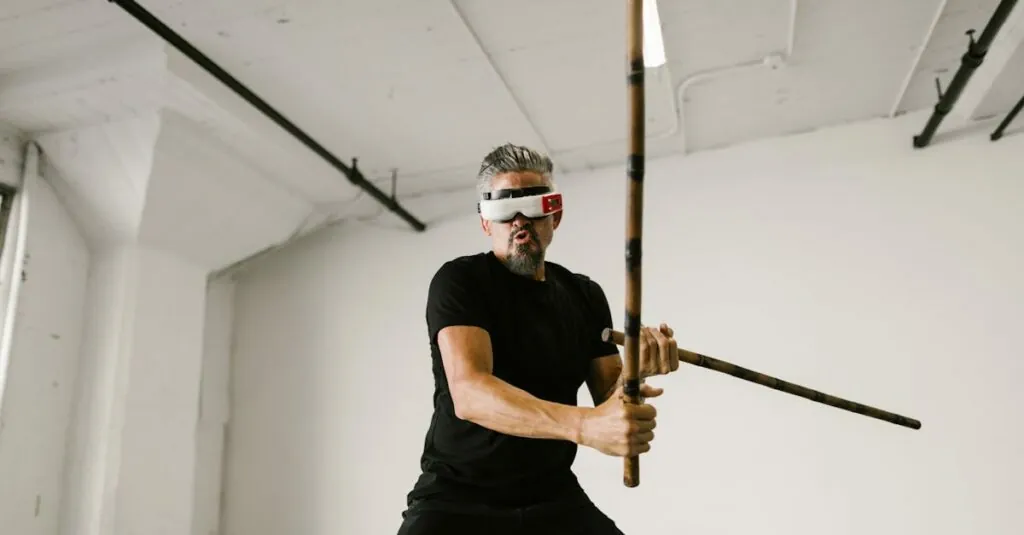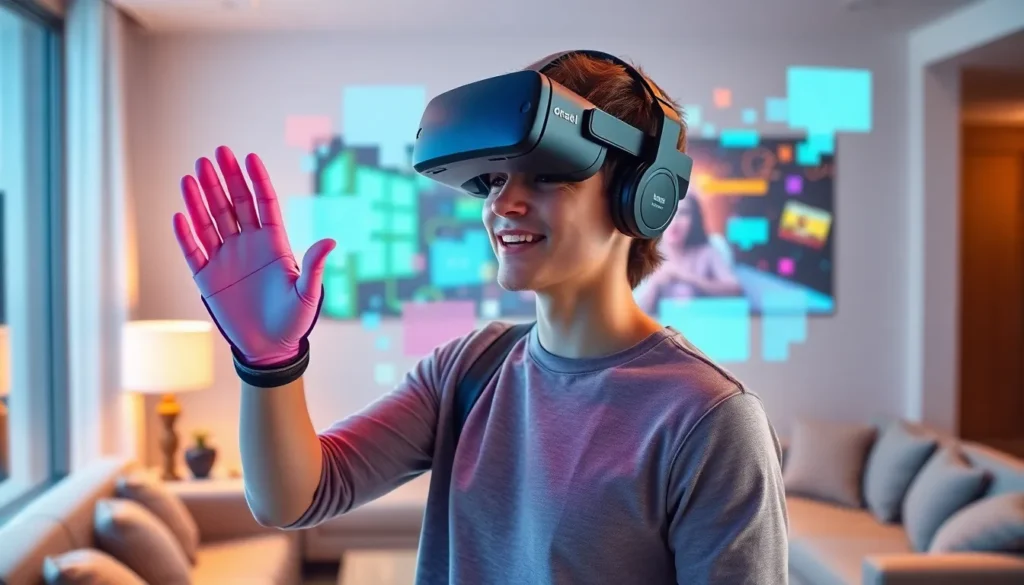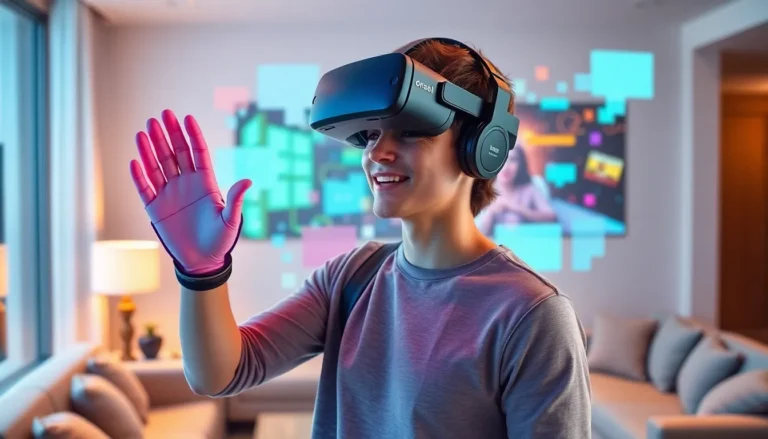Table of Contents
ToggleImagine stepping into a virtual world where fixing an HVAC system feels as easy as flipping a switch. With immersive VR technology, that dream’s become a reality. Gone are the days of dusty manuals and trial-and-error training. Now, technicians can dive into lifelike simulations that make learning not just effective but downright fun.
Overview of Immersive VR Technology
Immersive VR technology revolutionizes HVAC training by providing a realistic environment for hands-on experience. Technicians can practice in a virtual setting that simulates real-world scenarios, enhancing their problem-solving skills. This technology offers interactive elements that traditional methods cannot replicate.
In immersive VR training, users engage with 3D models of HVAC systems. They explore components and processes without the risk of damaging physical equipment. VR allows for the repetition of complex tasks until technicians master them, boosting confidence in their skills.
Data shows that immersive VR training can reduce training time by up to 60%. Additionally, it increases knowledge retention rates significantly, making learning more efficient. Users can access training modules anytime, promoting flexibility that traditional training lacks.
Furthermore, immersive VR experiences include immediate feedback systems. Trainees receive guidance, helping them correct mistakes in real time. Such instant feedback accelerates learning and ensures techniques are applied correctly.
Many HVAC companies now incorporate immersive VR technology into their training programs. By doing so, they prepare technicians to face challenges in the field. Companies benefit from a more skilled workforce, ultimately improving service quality and customer satisfaction.
Adopting this technology not only enhances training but also addresses industry skill gaps. As the HVAC landscape continues to evolve, VR training adapts to introduce new techniques and technologies, ensuring professionals remain up to date in their field.
Applications in HVAC Skills Training
Immersive VR technology finds significant applications in HVAC skills training, enhancing both learning experiences and outcomes.
Benefits of VR Training
VR training reduces training time by up to 60%. Technicians gain hands-on experience in realistic simulations, fostering confidence and competence in real-world scenarios. Immediate feedback during training accelerates the learning process. Trainees can repeat complex tasks until mastery is achieved, reinforcing skill retention. Engaging 3D models of HVAC systems allow users to explore components safely, eliminating risks associated with physical equipment handling. Flexibility in training modules accommodates various learning paces, enabling technicians to adapt to different HVAC systems and techniques effectively.
Comparison with Traditional Training Methods
Traditional training methods often rely on manuals and trial-and-error approaches, leading to longer training cycles. VR technology, however, transforms this process by providing immersive environments where technicians interact with virtual systems. Students benefit from real-time guidance and the ability to practice multiple scenarios, a stark contrast to static classroom settings. Knowledge retention rates improve markedly with VR, often exceeding traditional approaches. Engaging in simulation-based learning encourages active participation, which reinforces concepts better than passive methods. As HVAC technology evolves, VR training adapts quickly to include new techniques, preparing technicians for emerging industry challenges.
Effectiveness of VR in Skill Acquisition
Immersive VR technology significantly enhances skill acquisition in HVAC training by fostering real-world scenario engagement.
Case Studies and Success Stories
Research highlights impressive success in companies adopting VR for HVAC training. For instance, a prominent HVAC service provider reduced training time by 50% through VR modules. Trainees reported a higher confidence level while applying their skills in the field. Another case study documented a 70% increase in skill retention, showcasing the lasting impact of interactive simulations. Companies implementing VR noted notable improvements in service quality and customer satisfaction as well. These success stories underscore the practical benefits of immersive training experiences.
User Experience and Engagement
User engagement plays a critical role in effective learning through VR. Trainees find the interactive nature of VR fosters enthusiasm for complex tasks. Real-time feedback keeps them motivated, enabling instant corrections of errors and enhancing understanding. Users report that immersive environments lead to deeper connections with the material. They appreciate exploring 3D models of HVAC systems without risk. Engagement levels soar as learners navigate diverse scenarios, making the training feel relevant and applicable. Overall, the user experience in VR training contributes significantly to skill acquisition, bridging the gap between theory and practice.
Future Trends in VR for HVAC Training
Advancements in VR technology continue to shape HVAC training methodologies. Increased accessibility to affordable VR hardware enables more companies to implement immersive training solutions. Realistic simulations increasingly engage technicians in hands-on learning experiences, fostering quicker skill acquisition.
Emerging trends predict the integration of artificial intelligence into VR training systems. AI can personalize learning pathways, adapting scenarios based on individual trainee performance. Real-time analytics provide insights into progress, highlighting areas for improvement and fine-tuning training approaches.
Enhanced collaboration features within VR platforms facilitate teamwork among trainees. Virtual environments allow multiple users to interact simultaneously, practicing complex systems together. This teamwork fosters communication skills vital for successful HVAC professionals.
As VR technology evolves, more industries recognize its potential beyond traditional training. Research indicates that sectors such as construction and manufacturing benefit from similar immersive training methods, creating an increased demand for cross-industry solutions. Consequently, HVAC training programs may incorporate elements from these industries, enriching the overall experience.
Adopting remote training capabilities enhances flexibility for HVAC companies. Technicians can participate in VR sessions from any location, minimizing travel costs and promoting convenience. This adaptability prepares the workforce for sudden changes in the field.
By leveraging social learning theories, future VR training will likely include community features that connect technicians. Peer support and knowledge sharing can address shared challenges, building a more resilient workforce.
Data showcases that companies embracing these future trends experience remarkable improvements in training outcomes. Tracking skill retention and job performance metrics will become integral to assessing the effectiveness of VR programs. Thus, the future of HVAC training will hinge on adaptability and innovation, aligning with industry needs.
The integration of immersive VR technology in HVAC training is proving to be a game changer. By offering realistic simulations and interactive experiences, it equips technicians with the skills they need to excel in the field. This innovative approach not only accelerates the learning process but also fosters a deeper understanding of complex systems.
As companies continue to adopt VR training, the benefits become increasingly clear. Enhanced engagement and improved retention rates are just the beginning. The future of HVAC training looks bright as advancements in VR technology promise even more tailored and effective learning experiences. Embracing this evolution is essential for building a skilled workforce ready to tackle the challenges of tomorrow.







